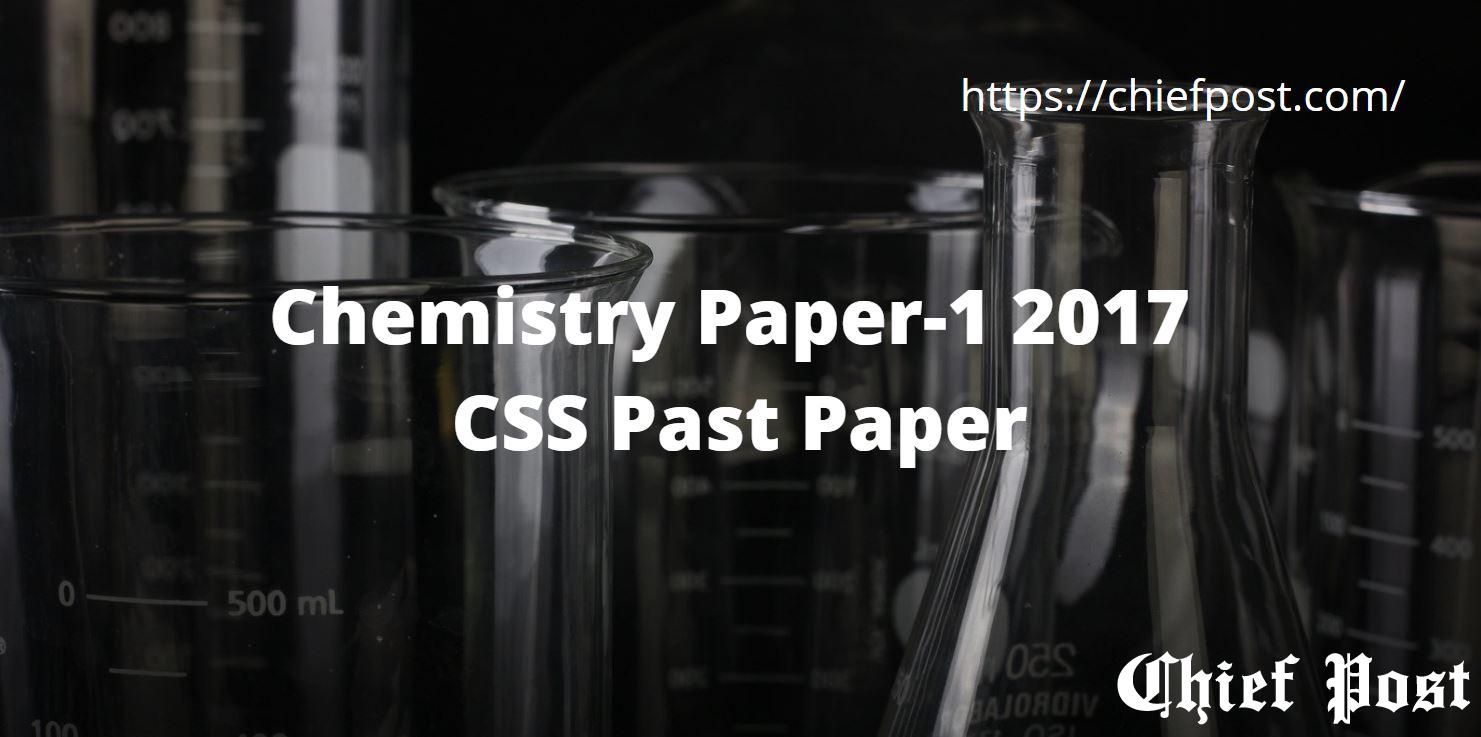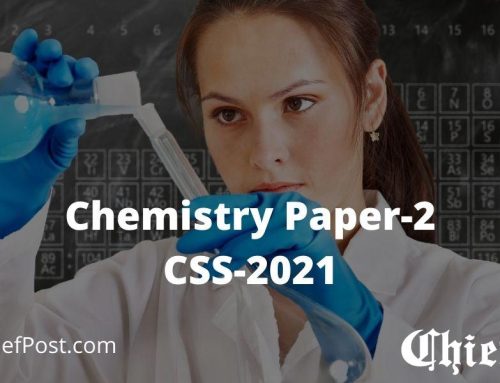
Chemistry Paper-1 2017 — CSS Past Paper
FEDERAL PUBLIC SERVICE COMMISSION
COMPETITIVE EXAMINATION-2017 FOR RECRUITMENT TO POSTS IN BS-17
UNDER THE FEDERAL GOVERNMENT
CHEMISTRY, Paper-1
TIME ALLOWED: THREE HOURS
PART-I(MCQS): MAXIMUM 30 MINUTES
PART-I (MCQS) MAXIMUM MARKS = 20
PART-II MAXIMUM MARKS = 80
NOTE:
- (i) Part-II is to be attempted on the separate Answer Book.
- (ii) Attempt ONLY FOUR questions from PART-II. ALL questions carry EQUAL marks.
- (iii) All the parts (if any) of each Question must be attempted at one place instead of at different places.
- (iv) Candidate must write Q. No. in the Answer Book in accordance with Q. No. in the Q.Paper.
- (v) No Page/Space be left blank between the answers. All the blank pages of Answer Book must be crossed.
- (vi) Extra attempt of any question or any part of the attempted question will not be considered.
PART-II
Q.No.2.
- (a) Derive Schrodinger wave equation for motion of a particle in one dimensional box. (10)
- (b) Solve Schrodinger wave equation to find the expression for wave function energy of a particle in one dimensional box. (6)
- (c) What is Eigen function and Eigen value? Give examples. (4)
Q. No.3.
- (a) Define heat capacities and molar heat capacities. Prove that C,-C\=R for ideal gases. (10)
- (b) What is Gibbs energy? Derive a relation between standard Gibbs energy change and equilibrium constant. (6)
- (c) Differentiate spontaneous and non spontaneous process. (4)
Q. No.4.
- (a) State and explain Kohlrausch’s law. Give its applications. (10)
- (b) What is meant by standard deviation? Give its significance in analytical chemistry. (6)
- (c) Briefly describe conductometric titrations. (4)
Q.No.5.
- (a) Discuss the effect of temperature on rate of chemical reaction on the basis of Arrhenius equation. How can you determine activation energy and pre-exponential factor for a chemical reaction using Arrhenius equation? (10)
- (b) Derive kinetic equation for 1* order reaction. (6)
- (c) Prove that half life period for 1“ order reaction is independent of initial concentration of reactant. (4)
Q. No.6.
- (a) What is adsorption isotherm? Derive Langmuir adsorption isotherm for adsorption of a gas on solid surface. (10)
- (b) What is enzyme catalysis? Discuss its kinetics. (6)
- (c) What are surfactants? Give their properties. (4)
Q.No.7.
- (a) What is electrophoresis? Give its principle and discuss its applications in biochemistry. (10)
- (b) Give six chemical properties of nitrogen. (6)
- (c) What is Common ions effect? Give its applications. (4)
Q. No.8.
- (a) State John-Teller theorem. Explain it using suitable examples from coordination _— complexes. (10)
- (b) Give postulates of Werner’s theory of coordination complexes. (6)
- (c) Briefly describe nuclear decay rate law for disintegration of radioactive elements. (4)
**********
Most Popular
Tags
Botany
British History
Business Administration
Chemistry
Competitive Exam
Computer Science
Constitutional Law
Criminology
CSS
CSS-2021
CSS-2024
CSS 2022
Current Affairs
Economics
English
English Essay
English Literature
English Précis and composition
European History
FPSC
Gender Studies
General Science and Ability
Geography
Governance and Public Policies
History of Pakistan And India
International Law
International Relations
IR
Islamic History & Culture
ISLAMIC STUDIES
Islamiyat
Journalism & Mass Communication
Law
Mercantile Law
Pakistan Affairs
Pashto
Past Paper
Philosophy
Political Science
Psychology
Punjabi
Pure Mathematics
Sociology
Town Planning & Urban Management
Zoology










